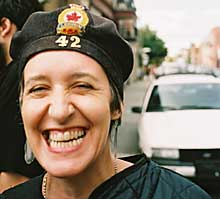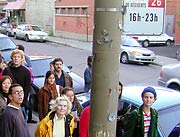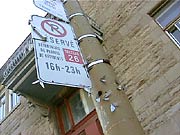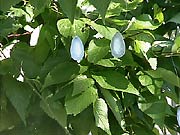


Après des études en design au Nova Scotia College of Art and Design de Halifax à la fin des années 1970, Susan Coolen entreprend, en 1991, un baccalauréat en photographie à l'Université Concordia de Montréal, discipline dans laquelle elle obtient également une maîtrise du Columbia College de Chicago. Ses œuvres ont été présentées dans plusieurs expositions individuelles et collectives au Québec, au Canada et aux États-Unis, dont, récemment, Shifting Sites, présentée au Musée canadien de la photographie contemporaine d'Ottawa, et Encontros con la image, événement tenu à Tenerife, aux Îles Canaries, en 2000. Elle vit et travaille à Montréal.
Installation extérieure
Photographies installées sous les sources lumineuses de la rue Villeneuve
C’est à la tombée du jour que prennent vie ces essaims de lépidoptères, lorsque la lumière des lampadaires sur lesquels ils s’agglutinent traverse leurs ailes diaphanes. Il faut être attentif pour découvrir cette subtile installation et prendre le temps de s’arrêter pour en apprécier la luminosité. Car le sens même de l’œuvre appelle à la lenteur et à la contemplation, que ce soit par la référence à la longue métamorphose de la chrysalide ou à travers la notion de bien-être que l’on associe au cocon. Lepidus Lepidoptera nous amène surtout à réfléchir à cette quête de lumière du papillon de nuit, une quête qui, somme toute, ne diffère peut-être pas de la nôtre.
Extrait du texte
Villeneuve revisité
de Sylvette Babin


Outdoor installation
It is at dusk that these swarms of lepidoptera come alive, at the moment when the light of the streetlights, on which they congregate, traverses their diaphanous wings. One must be patient and alert to discover this subtle installation, and to take one’s time to appreciate its luminosity. Contemplation and slowness are at the heart of this work, whether it be through the reference to the long metamorphosis of the chrysalis, or through the notion of well being that is associated with the cocoon. Lepidus Lepidoptera invites us to reflect on the moth’s quest for light, a quest, which after all, is perhaps not that different from our own.
Excerpt from
Villeneuve revisited
by Sylvette Babin
Translation by
Bernard Schutze
STATEMENT
Lepidus Lepidoptera
For the Villeuve Tour project I placed numerous clusters of small moths and cocoon images into the exterior environment of the city street. Here images were placed unobtrusively under street lights and near other sources of exterior light.
Printed on translucent duratrans material, these tiny works become more visible as day recedes into darkness. Seemingly gravitating towards a source of illumination, the images may in fact have to share the same physical environment with their live nocturnal counterparts.
In the same environment, tiny moth cocoons were hung under light sources as well. Like miniature Japanese lanterns, these images too use the city night light to give shape and meaning to their intrinsic form. But because these images are small and discreetly placed, both sets of subjects were most likely rendered invisible by the bright light of day and so the viewer or passerby was not immediately aware of this photographic intervention.
This new work continues my interest in collecting specimens, photographing them, and renaming them in order to shift their reading as objects. The name "lepidoptera" rightly classifies the "scientific order" of this particular insect, but the word "lepidus" – a derivative, means humorous, pleasant and agreeable. Turning the small housing units of the moths – the cocoon– into objects associated with illumination themselves, lends a charming wit to the project.
Originating out of the childhood ritual of scavenging the shoreline of a small coastal village for washed-up treasures, my photographic practice revolves around the activity of collecting specimens (which I often mummify), found objects and the detritus of daily life. Beginning as an initial response to these items I then turn to interests in the discursive practices of natural history, the museum, astronomy, science, storytelling, and forms of cultural narratives to inform my work.
